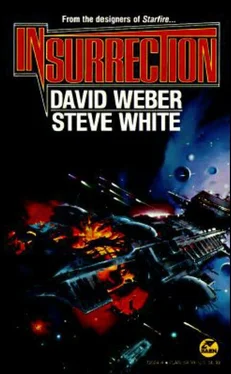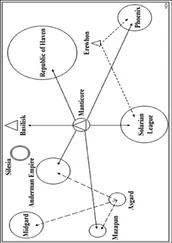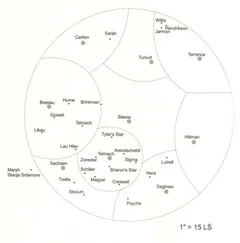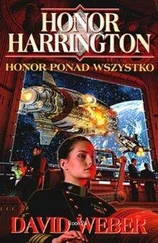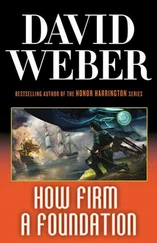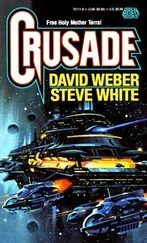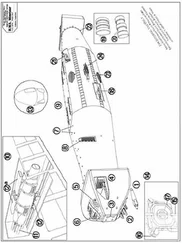"I think you're right," Magda acknowledged, "and you might like to know that it took the Strategy Board a month to reach your conclusions." She smiled. "But there's still a billion-credit question, Han. We don't have the Fleet units to oppose both forces at once. We have to stop one of them, then turn to deal with the other in detail, using our advantage of the interior position. So which do we oppose?"
Han blinked at her.
"You're asking me? Magda, I've been out of circulation for a year!"
"But you're also the senior commander who's really seen the Rim's weapons in action, so you can give us the best gut reaction on them. Should we worry more about quantity or quality? Because-" Magda grinned crookedly "-for our sins, you and I are going to be the Fleet commanders who do the stopping. So who do we stop, Han? The Rump or the Rim?"
Han dropped into a chair and thought long, hard and furiously.
"The Rump doesn't have any of the new technology? Just numbers?"
Magda nodded.
"And have we come through with any of those 'wonder weapons' people were muttering about before Second Zephrain? Do we have any surprises of our own?"
"A few," Windrider said.
"Then we have to block the Rump with secondary forces and go for the Rim with everything we have," Han said, suddenly decisive. "No matter how many hulls the Rump has, we can tangle them up in the frontier forts, mines, and local fighter bases. We can slow them up, at least, but you've never seen anything like Trevayne's new battle-line. We have to stop him, and stop him hard. If at all possible, we have to cut him up badly enough to move in and take Zephrain away from him. Even if we lose a dozen systems-or twice that many!-to the Rump, we've still got a good chance to win this war in the end if we can keep them away from Zephrain."
"And where do we stop them?" Magda asked tonelessly.
"Zapata," Han said crisply. "It's a critical choke point, and we can move stuff in from Bonaparte for the big engagement. Use commerce raiders on the flanks as they advance . . . pick at them . . . get them off balance and force them to overextend . . . then meet them head-on at Zapata and thank God building that monster battle-line's cut into their carrier production! It's our only chance, Magda."
"I see." Magda exchanged a nod with Jason, then turned back to Han. The tangled lights of the holo map gilded her silver-streaked brown hair with a crown of jewels, and her eyes glittered with stars. "That's another thing you and the Strategy Board agree on, and I'm glad you see it so clearly . . . sir."
Something in her voice caught Han's attention, and she stared at her friend suspiciously. No! She couldn't mean . . . !
"That's right, Han," Magda said almost compassionately. "One of the reasons I was ordered to have this little chat with you was to be certain you did understand the priorities. You got your second star while you were still a POW-the same day I got mine. And that means you're still senior." She held out the luminous pointer.
"Welcome to supreme command of Operation Actium, Admiral Li."
Operation Reunion began with an irruption of SBMHAWK carrier pods into the Zvoboda System. One moment the Republican Navy's detection screens were blank: the next a multitude of unmanned pods transited into the teeth of the forts guarding this gateway to the Terran Republic. A few came to grief in the warp point minefields; a few more emerged in overlapping volumes of space and died with the violence the gods of physics reserve for phenomena which violate their laws. But most survived to fling their missiles at the forts, announcing the arrival of the Federation's warriors in fire and death.
Probes of the Zvoboda System had been limited to avoid alarming its defenders, but Ian Trevayne had a fairly good notion of what he would face. The Republic had erected a formidable shell of big type four OWPs around the Zephrain warp point and another around the warp point to New India, but Lavrenti Kirilenko was convinced there would be few mobile units. The forts were typical of the Republic's designs, each incorporating two squadrons of fighters; that fighter strength, coupled with the forts' own weapons, needed no support to decimate any conventional assault.
Trevayne and Genji Yoshinaka agreed with Kirilenko's assessments; hence the lavish SBMHAWK bombardment that preceded their ships through the warp point. Such a heavy employment of SBMs would seriously deplete their stores for the next assault, but there was no point planning for the next battle if they lost this one. Besides, everything seemed to suggest that Zvoboda had been so heavily fortified that the Republic could have spared little for the defense of New India.
Missiles leapt from their carrier pods, but the Republican gunners hadn't been asleep. The Rim's decreased probe traffic hadn't lulled them; rather it had confirmed their suspicions, and they'd gone on round-the-clock alert. Still, no one could be a hundred percent alert at every instant, and if point defense stopped a lot of missiles, nothing could have stopped them all.
Antimatter warheads flared against shields. Tremendous fireballs wracked the space around them. Armor glowed, vaporized, flared away. Atmosphere whuffed outward, water vapor sparkling, as the missiles savaged the forts. Yet for all their savagery, all their violence, they couldn't prevent the Republic from launching the majority of its fighters.
But Trevayne had anticipated that, and he had no intention of offering up his strictly limited carrier strength for target practice, even if The Book did call for fighters as the best defense against fighters. Instead, the ships that followed the carrier pods into Zvoboda used a tactic which was new, one so unorthodox it took the defenders totally by surprise, yet so simple they wondered why no one else had ever thought of it.
TFNS Nelson was the first ship out of the warp point, followed by the monitor da Silva. As soon as da Silva emerged, Nelson grabbed her with tractor beams and began to tow her astern. Simultaneously, da Silva cut her own propulsion, maintaining just sufficient drive field to interdict missile fire, and rolled to place herself stern-to-stern with Nelson -an unheard of position. Then another supermonitor/monitor pair emerged, and another. . . .
All strikefighter pilots knew to attack battle-line units by maneuvering into the sternward "blind zone" created by the slow and clumsy ship's drive field, where its tracking systems were useless and its weapons could not be brought to bear. But the rebel pilots, racing to implement their fundamental tactical doctrine, were slaughtered by defensive fire from the supermonitors and monitors while searching for blind zones that were, in effect, not there! They inflicted damage, of course-quite a lot, in fact. But monitors were designed to absorb and survive damage, and supermonitors even more so. The fighters were cut down before their short-ranged weapons could take decisive effect, and the big ships lumbered towards the fortresses, contemptuous alike of the fighters and mines that sought to hinder them.
The fortress crews knew what their fighters' failure meant. They'd seen the reports on Second Zephrain, and they knew all about the improved force beams Trevayne's ships mounted, but they stood to their weapons, pouring in defensive fire against the oncoming ships. Damage control parties aboard the supermonitors and monitors found their services in high demand, but not critically so, and the capital ships riddled the forts with primary-mode fire and then reduced them to tangled wreckage with "wide-angled" fire even as Sean Remko's battlecruisers savagely hunted down the few mobile rebel units.
Читать дальше
